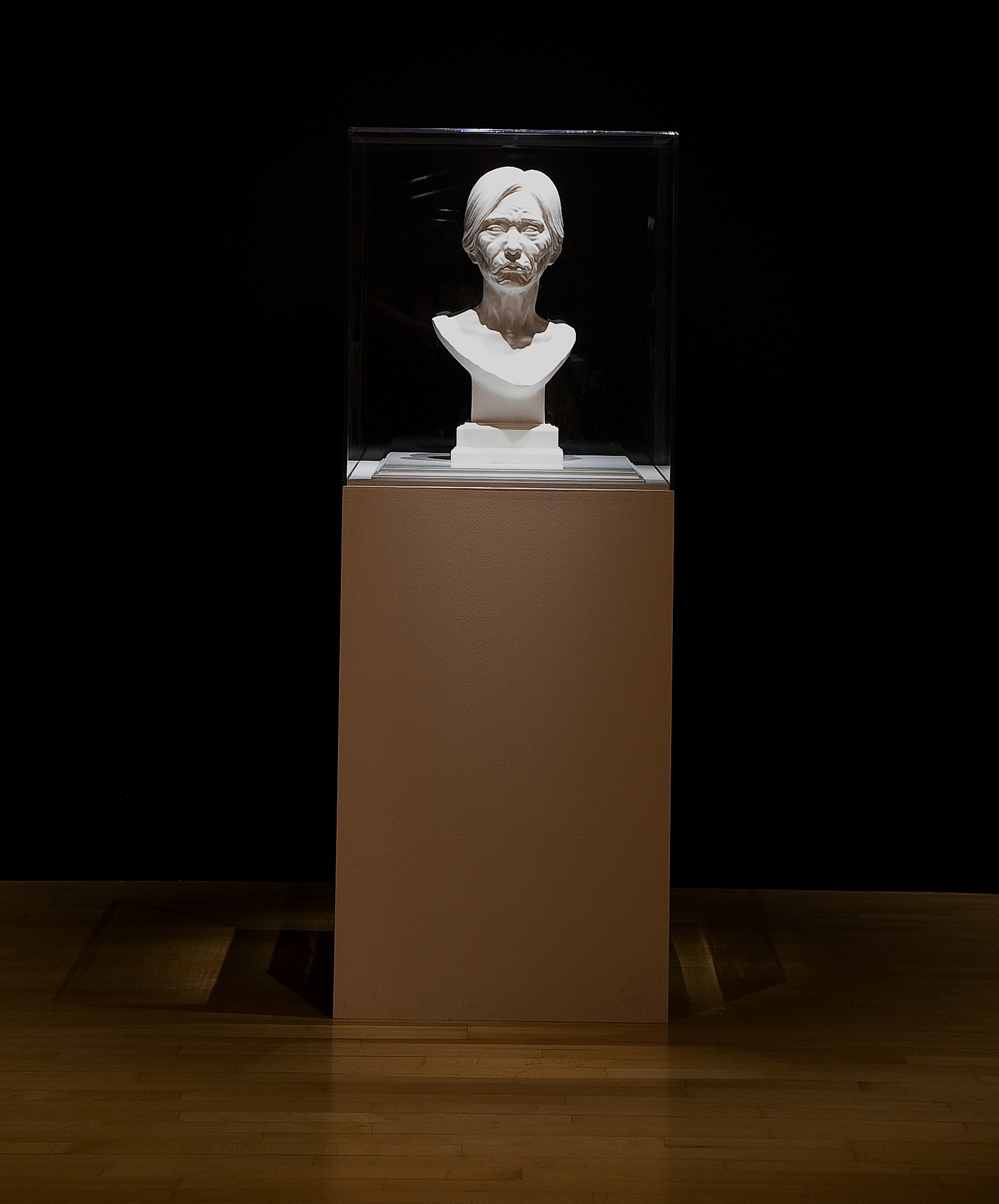| Vanitas bust |
| LEE Byung Ho |
|
|

Vanitas bust
Lee Byung Ho incorporates elements of movement into his sculpture, using soft materials such as silicon, and air compressors. His Vanitas Bust expresses in a simple and direct way his exploration of the idea of "unchanging beauty" that a work of art, particularly a solid portrait sculpture has secured for human beings.
Vanitas is the Latin word for "vanity". In art history, the word vanitas has also been used to describe a style of still-life painting fashionable among affluent Europeans in the 16th and 17th century mainly in the Netherlands and the Flanders region.
Although the model for Lee's Vanitas Bustis an Asian person with whom he has close contact, at a glance the sculpture has the Mannerist style of Europe at the time. Its surface however, is not one of marble, but a soft silicon film. By changing the setting on the air compressor inside the pedestal of the sculpture, the beautiful, fresh, young exterior that one would have expected tobe preserved, in an instant turns into a wrinkled old person.
Lee exhibits a male and female Vanitas Bustfor this exhibition. Sculptures that repeatedly cycle though youth and old age in front of the viewer. These sculptures are less sympathetic than the European vanitas paintings, and remind us of the fact that we are continually aging and that someday death will be welcoming us.
|
|
|
|